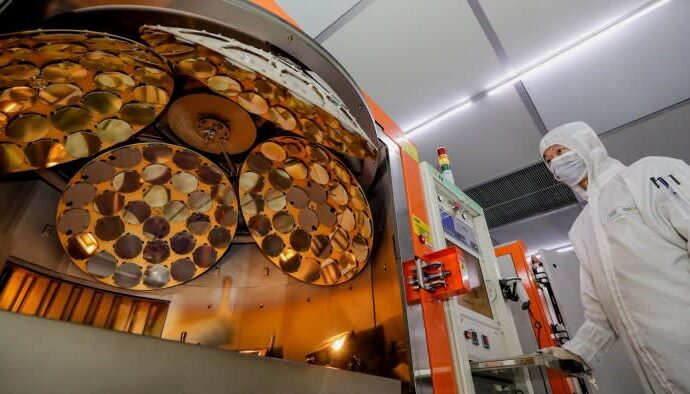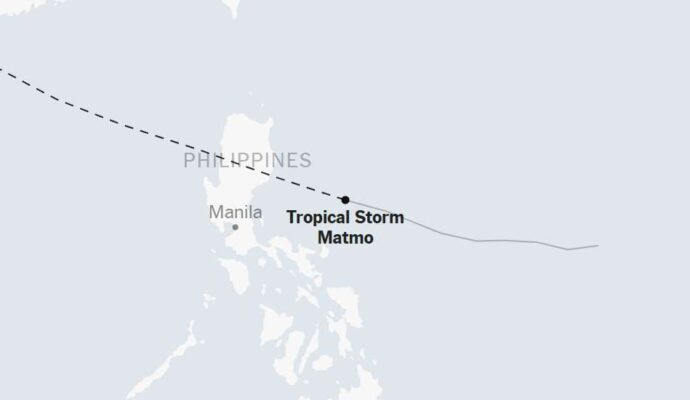
Unlock the Editor’s Digest for free
Roula Khalaf, Editor of the FT, selects her favourite stories in this weekly newsletter.
The Japan defence industry trade show DSEI, held earlier this year in Tokyo, found the pacifist host nation preparing for war. Wisely, perhaps, and with a new urgency derived as much from the behaviour of its supposed friends as its potential enemies. But preparing for war is one thing; preparing to not be at peace requires a further step.
The 80th anniversary this Friday of Japan’s defeat in 1945, the remarkable eight decades of constitutional and ideological pacifism that followed and a gruesome mannequin highlight just how huge a step it would be.
The defence show was, by any standards, a whopper. Booths of 471 defence companies, representing 33 countries, stuffed a convention centre on the edge of the capital to flog their war-related wares: a cologned corps of dealers itching for a share of Japan’s new realpolitik and significantly expanding military budget.
Aisle after aisle of drones, armoured vehicles, models of joint strike fighters and other military hardware made the familiar double case for tooling-up at a national level: deterrence goes a long way but superior technology is needed when that no longer works.
Lying — horrifically and unmissably — on a gurney in the middle of the main hall, though, was Sam, a meticulously constructed dummy of a wounded infantryman in dire need of field surgery. The simulated soldier’s right leg had been blown off below the knee; shrapnel lacerated his other limbs; from a gaping hole in his torso, crimson liquid pooled over major organs. All around this wretched figure in his silent, silicone agony, multimillion dollar kit gleamed with the promise of inflicting multiples of this misery on an unnamed foe.
This made Sam, arguably, the most important participant at the show. The mannequin, evolved over years and used since 2023 to train British military surgeons in treating combat wounds and civilian doctors in dealing with injuries from terrorist attacks, is the invention of Ian Pallister, a star of major trauma surgery and a professor at Swansea University. Traditionally, military training scenarios involve an actor, gory make-up and verbal discussion of the surgery; with Sam, the fountains of fake blood do not stop until the correct procedures have been performed.
Pallister’s pitch is that medical readiness, a subset of overall military readiness, demands constant, cutting-edge attention. He refers, as do various defence white papers, to the “Walker dip” — the cycle in which the collective knowledge and experience of doctors treating battlefield injuries peaks during wartime, but plunges during peace, becoming insufficient at the start of the next conflict. Japan’s decades without war, and a military whose main activities have been disaster relief, means that its Walker dip is older than all its working surgeons.
Straightforwardly, then, Japan’s defence or health ministries should, as part of the push for military readiness, buy several of Pallister’s expensive mannequins and get training. That strategy, after all, seems to be working in the broader context of remilitarisation and investment in fighters, missile defence and other capabilities.
In 2023, Japan announced that it would, over five years, raise the defence budget to about 2 per cent of GDP. This change, with all its historic significance for Japan’s self-image as a pacifist country, came with appropriately grandiose warnings about the fragility of the world.
Japan finds itself, according to the recent white paper, in “the most severe and complex security environment of the postwar era”. The international community, it added, is entering a new era of crisis.
This was the prevailing assessment even before Donald Trump’s second presidency upset Japan’s sense of security. Japan’s 80 years of pacifism, for all its genuine endurance among the general public, has depended on the solidity of the US defence umbrella and the reliable non-pacifism of its closest ally. However solid that alliance may be, Trump has allowed Japan to conclude that it should not take anything for granted and must take greater responsibility for its own defence.
And this is why Sam presents such a terrifying and necessary challenge. Japan’s government and public may, at some level, see that the risk of conflict is rising, that it must do more to protect itself and that its pacifism may become an anachronism. But it has not yet begun the grim business of steeling itself mentally for the terrible consequences, nor of training civilian and military surgeons for wounds that none of them have ever seen.
A training mannequin of silicone, plastic and red-dyed “blood”, by definition presents a hypothetical situation. But Sam’s presence at the show made everything else in the exhibition seem horribly real.


